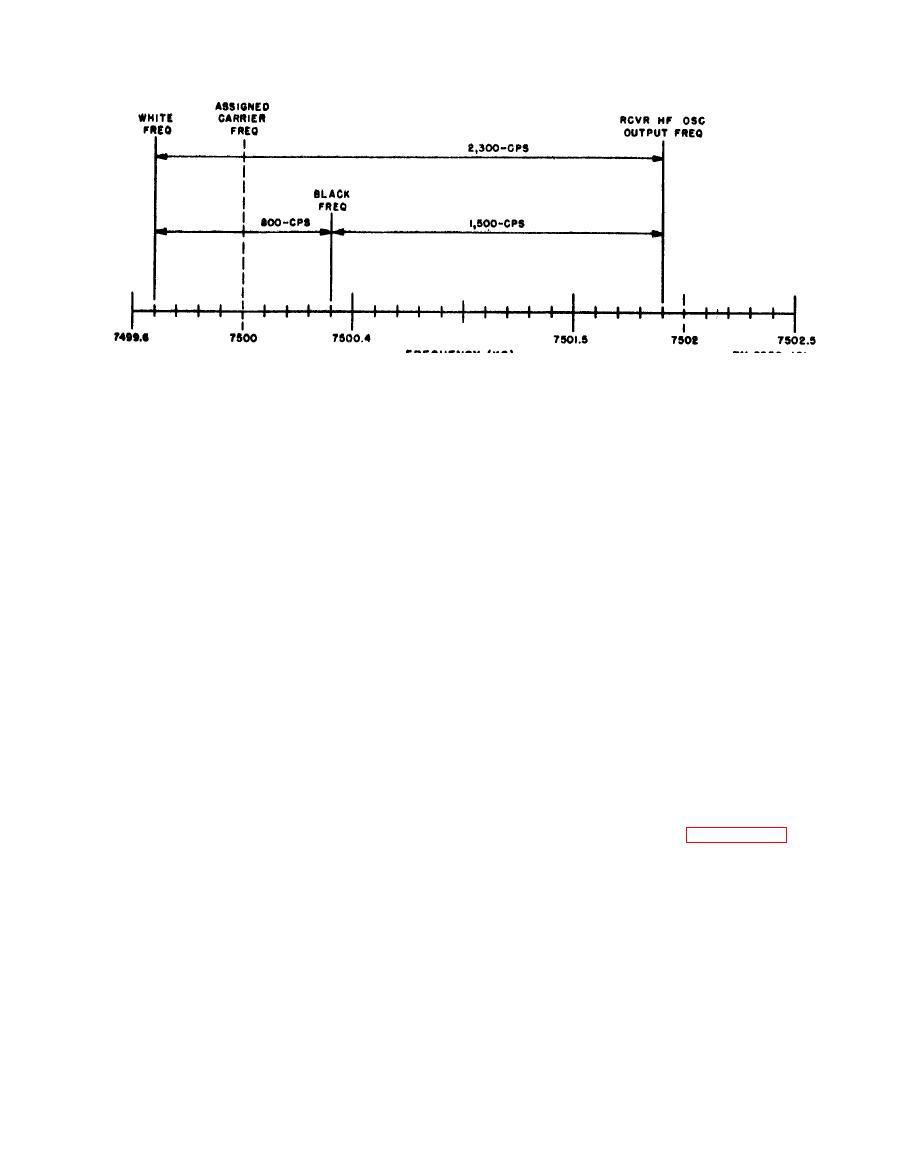
(e) With the transmitting operator sending
comparison with the signal from an
a steady minimum signal (7,499.6 kc
audio oscillator.
in this example), adjust Frequency
Meter BC-221 until the af output sig-
an audible oscillation which is highly accu-
rate. This can be used for checking the
nal from the radio receiver is exactly
1,800-cycle signal from the receiver when the
2,300 cps. Check to see that the fre-
1,800- to 3000-cps shift limit is used.
quency meter is tuned 2,300 cps (2.3
kc) above the incoming signal (to
(g) Check the accuracy of the adjustments
by listening to the series of maximum
7,501.9 kc in this example). Check
signals, minimum signals, and phasing
this by varying the frequency meter
pulses which the transmitter operator
dial through zero beat and by turning
it to the highest frequency setting of
will repeat two or three times.
the two settings that will produce a
2,300-cps receiver output signal.
on positive transmissions (maximum
Check the accuracy of the 2,300-cps
signal on black), the radio receiver out-
signal either on a direct reading af
put will be a steady 1,500-cps tone,
meter or by comparing it with the
interrupted onoe each second by a
signal from an audio oscillator.
2,300-cps pulse. On negative trans-
( f ) With the transmitting operator sending
missions, during phasing, the radio re-
a steady maximum signal (7,500.4 kc
ceiver output will be a steady 2,300-cps
in this example), and without changing
tone, interrupted once each second by
the setting of the frequency meter, the
a 1,500-cps pulse.
receiver output signal should be ex-
(2) Set up Facsimile Transceiver TT-1(*)/
actly 1,500 cps. This can be checked
with the direct reading af meter or by
TXC-1 as outlined in paragraph 28.


